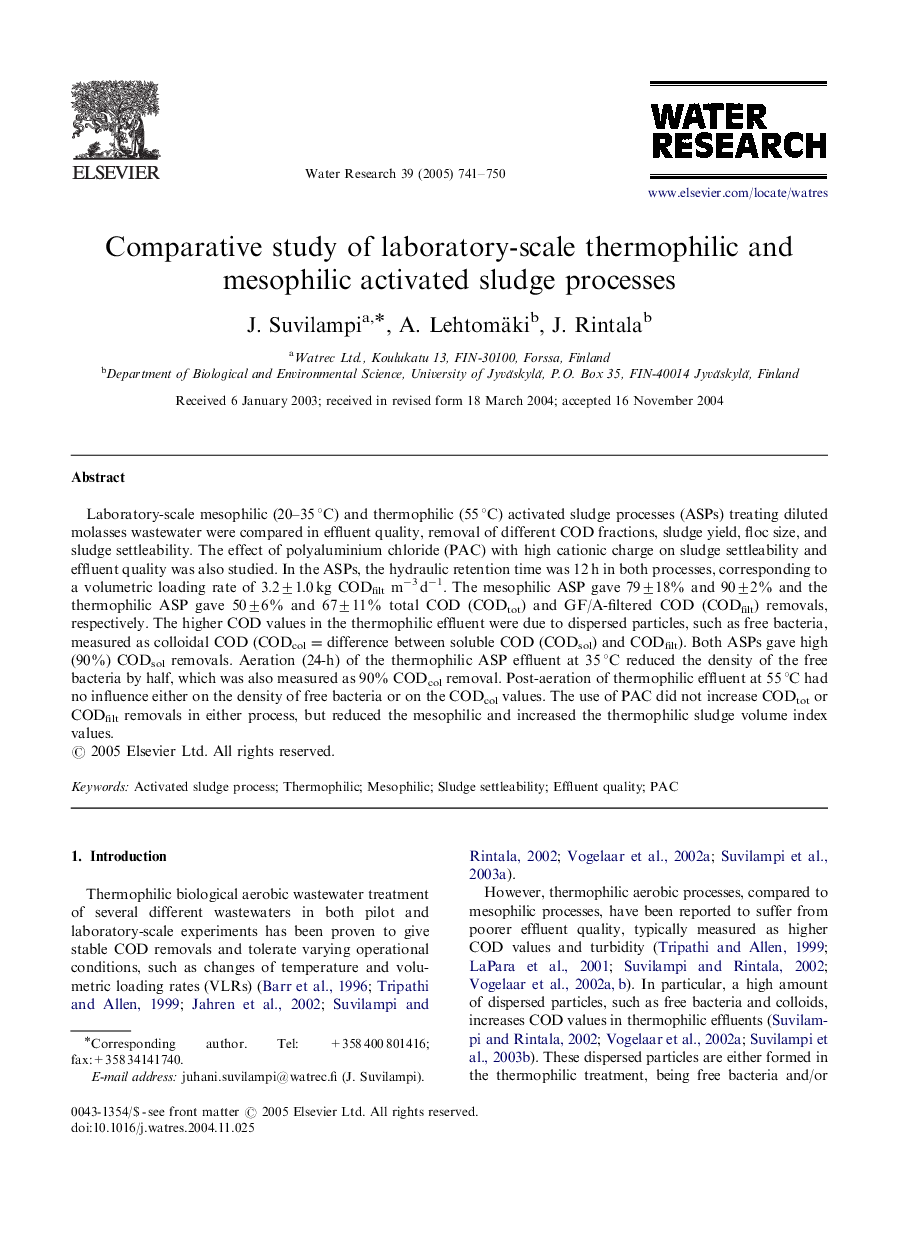| کد مقاله | کد نشریه | سال انتشار | مقاله انگلیسی | نسخه تمام متن |
|---|---|---|---|---|
| 9468279 | 1317015 | 2005 | 10 صفحه PDF | دانلود رایگان |
عنوان انگلیسی مقاله ISI
Comparative study of laboratory-scale thermophilic and mesophilic activated sludge processes
دانلود مقاله + سفارش ترجمه
دانلود مقاله ISI انگلیسی
رایگان برای ایرانیان
کلمات کلیدی
موضوعات مرتبط
مهندسی و علوم پایه
علوم زمین و سیارات
فرآیندهای سطح زمین
پیش نمایش صفحه اول مقاله

چکیده انگلیسی
Laboratory-scale mesophilic (20-35 °C) and thermophilic (55 °C) activated sludge processes (ASPs) treating diluted molasses wastewater were compared in effluent quality, removal of different COD fractions, sludge yield, floc size, and sludge settleability. The effect of polyaluminium chloride (PAC) with high cationic charge on sludge settleability and effluent quality was also studied. In the ASPs, the hydraulic retention time was 12 h in both processes, corresponding to a volumetric loading rate of 3.2±1.0 kg CODfilt mâ3 dâ1. The mesophilic ASP gave 79±18% and 90±2% and the thermophilic ASP gave 50±6% and 67±11% total COD (CODtot) and GF/A-filtered COD (CODfilt) removals, respectively. The higher COD values in the thermophilic effluent were due to dispersed particles, such as free bacteria, measured as colloidal COD (CODcol=difference between soluble COD (CODsol) and CODfilt). Both ASPs gave high (90%) CODsol removals. Aeration (24-h) of the thermophilic ASP effluent at 35 °C reduced the density of the free bacteria by half, which was also measured as 90% CODcol removal. Post-aeration of thermophilic effluent at 55 °C had no influence either on the density of free bacteria or on the CODcol values. The use of PAC did not increase CODtot or CODfilt removals in either process, but reduced the mesophilic and increased the thermophilic sludge volume index values.
ناشر
Database: Elsevier - ScienceDirect (ساینس دایرکت)
Journal: Water Research - Volume 39, Issue 5, March 2005, Pages 741-750
Journal: Water Research - Volume 39, Issue 5, March 2005, Pages 741-750
نویسندگان
J. Suvilampi, A. Lehtomäki, J. Rintala,